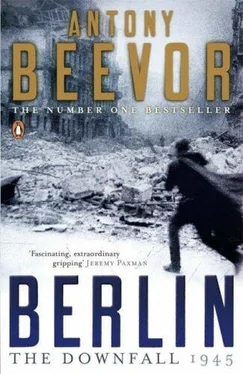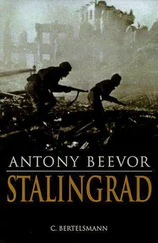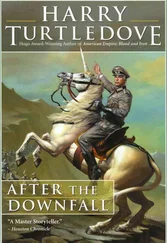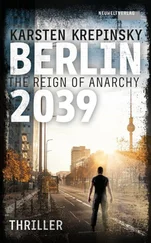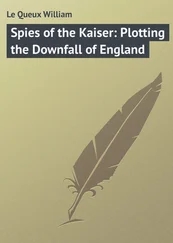Scotsman
‘A clear window into that dark, awful past for those in Europe — or anywhere else — who have not known war’s horrors’.
Time
‘Reading Berlin is like viewing some enormous, latter-day Hieronymous Bosch painting of the human race in total meltdown. You can’t comprehend its entirety at first glance, because each of the fascinating details compels your attention’.
Boston Herald
‘A devastating account’.
New Statesman
‘Chilling, authoritative… Beevor magnificently captures the true pity of war’.
Daily Mail
‘Digging deep into Soviet files, personal diaries and memoirs… Beevor brings vividly alive the final days of the doomed metropolis. It’s in his eye for the chilling detail about ordinary people and soldiers caught up in the maelstrom of defeat that Beevor so magnificently captures the true pity of war. Compelling, admirably readable and fresh’.
David Stafford,
Evening Standard
‘Immaculately assembled, meticulous exposition. With an epic sweep worthy of Tolstoy, Beevor has produced a superlative sequel to Stalingrad’.
The Times
‘A horrifyingly vivid account of the Fall of Berlin in 1945. Beevor handles his subject sensitively and wisely’.
Daily Telegraph
‘Hugely impressive. Beevor is a superb writer, a diligent researcher and a master of detail’.
Chicago Tribune
‘Beevor has created haunting images of the war’s final days… the best account yet written’.
Carlo D’Este,
New York Times
Antony Beevor was educated at Winchester and Sandhurst. A regular officer in the 11th Hussars, he served in Germany and England. He has published several novels, while his works of non-fiction include The Spanish Civil War, Crete: The Battle and the Resistance, which won the 1993 Runciman Award, Stalingrad and Berlin: The Downfall 1945. With his wife, Artemis Cooper, he wrote Paris After the Liberation: 1944–1949. Stalingrad was awarded the Samuel Johnson Prize for Non-fiction, the Wolfson History Prize and the Hawthornden Prize in 1999. It became a number-one bestseller both in hardback and paperback, the UK edition alone selling over half a million copies. It is being published around the world in twenty-four translations. Berlin: The Downfall 1945 was also a number-one bestseller and is being translated into twenty-four languages. Most of his titles are published by Penguin.
Antony Beevor is a Fellow of the Royal Society of Literature and a Chevalier de L’Ordre des Arts et des Lettres in France. In 2003, he received the first Longman-History Today Trustees’ Award. He was the 2002–2003 Lees-Knowles lecturer at Cambridge and is a visiting professor at Birkbeck College, University of London.

PENGUIN BOOKS
Published by the Penguin Group
Penguin Books Ltd, 80 Strand, London WC2R 0RL, England
Penguin Group (USA) Inc., 375 Hudson Street, New York, New York 10014, USA
Penguin Group (Canada), 90 Eglinton Avenue East, Suite 700, Toronto, Ontario, Canada M4P 2Y3 (a division of Pearson Penguin Canada Inc.)
Penguin Ireland, 25 St Stephen’s Green, Dublin 2, Ireland (a division of Penguin Books Ltd)
Penguin Group (Australia), 250 Camberwell Road, Camberwell, Victoria 3124, Australia (a division of Pearson Australia Group Pty Ltd)
Penguin Books India Pvt Ltd, 11 Community Centre, Panchsheel Park, New Delhi — 110 017, India
Penguin Group (NZ), 67 Apollo Drive, Rosedale, North Shore 0632, New Zealand (a division of Pearson New Zealand Ltd)
Penguin Books (South Africa) (Pty) Ltd, 24 Sturdee Avenue, Rosebank, Johannesburg 2196, South Africa
Penguin Books Ltd, Registered Offices: 80 Strand, London WC2R 0RL, England
www.penguin.com
First published by Viking 2002
First published in Penguin Books 2003
This edition published 2007
Copyright © Antony Beevor, 2002
Maps copyright © Raymond Turvey, 2002
All rights reserved
The moral right of the author has been asserted
Except in the United States of America, this book is sold subject to the condition that it shall not, by way of trade or otherwise, be lent, re-sold, hired out, or otherwise circulated without the publisher’s prior consent in any form of binding or cover other than that in which it is published and without a similar condition including this condition being imposed on the subsequent purchaser
ISBN: 978-0-141-90302-6
Medical personnel had such a terrible time that a very large proportion gave up medicine at the end of the war.
In October 1944, after Brandt had accused Dr Morell of providing Hitler with dangerous drugs, the dispute had been solved by making Brandt Reich Commissioner for sanitation and health. The allies later held him responsible for euthanasia killings and medical experiments on prisoners and rejected his defence that he had had no control over the establishments where this had happened.
Soviet estimates put the German strength at 180,000. This was because the Red Army included all those they took prisoner afterwards, including unarmed Volkssturm, city police, railway officials and members of the Reich Labour Service. Propaganda naturally played a part too.
Soviet sources claim that Busse’s force in the forest amounted to 200,000 men, with 300 tanks and 2,000 guns, a preposterous exaggeration for propaganda purposes. One detailed US Army report, however, puts the figures even lower, at around 40,000.
Some historians appear to think that the poison used in all cases was prussic acid, not cyanide, but prussic acid is in fact a form of cyanide. In any case, the Soviet autopsy report on Adolf and Eva Hitler states, ‘The remains of glass ampoules which had contained cyanide compound were found in the oral cavities. These were identical to those found in the mouths of Goebbels and his wife.’
Formerly RTsKhIDNI (Rossiisky Tsentr Khraneniya i Izucheniya Dokumentov Noveishei Istorii)
The ‘Special Archive’ of captured German documents comes from the 194,000 Nazi Party, Reich Chancellery, SS and Gestapo files discovered by the 59th Army of the Red Army at a castle in Lower Saxony (probably Schloss Furstenstein near Waldenburg, rather than the Schloss Althorn mentioned in some accounts)
